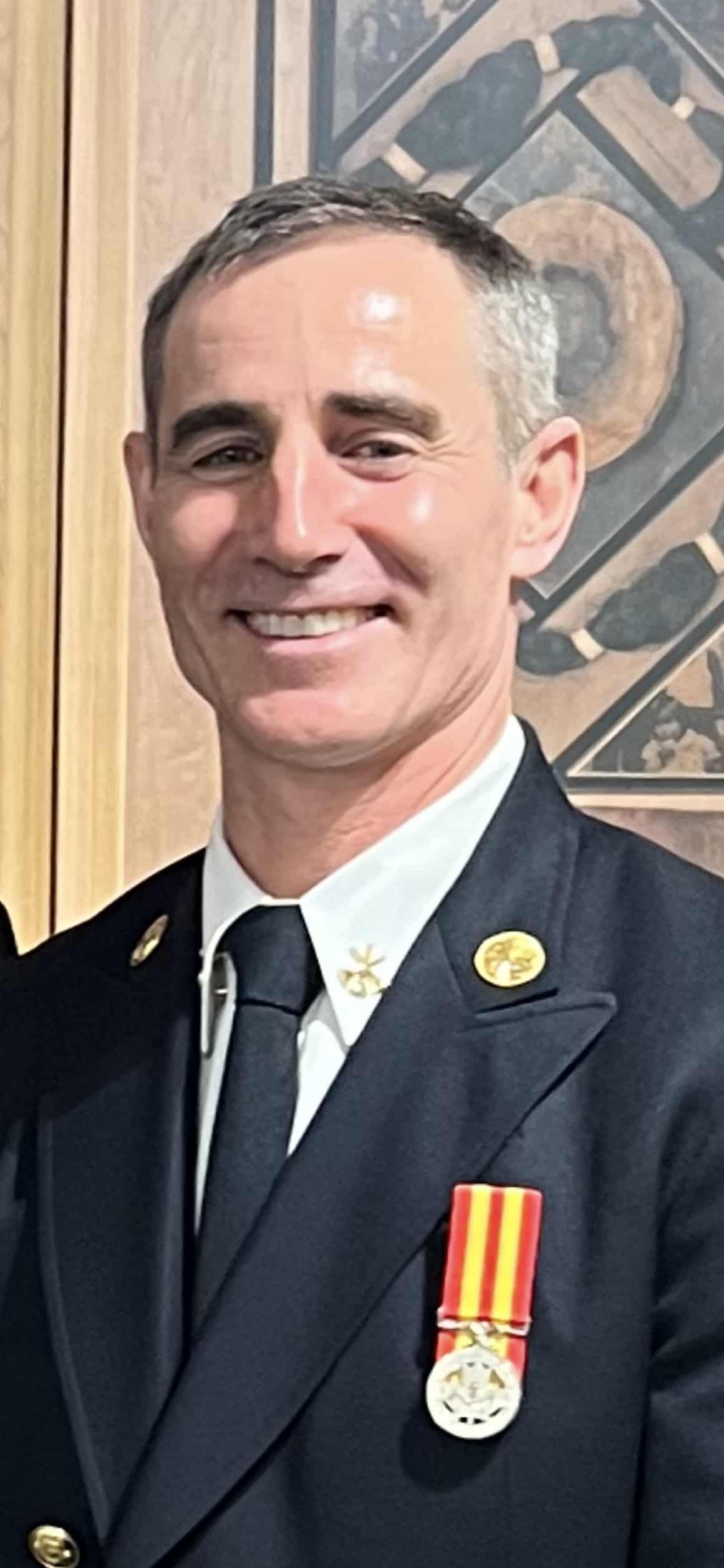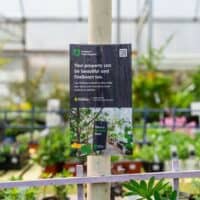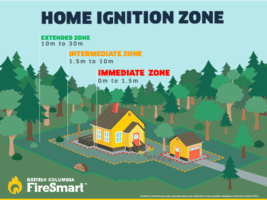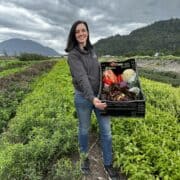Maple Leaf Garden Centres and the District of North Vancouver Fire Rescue Service have partnered with British Columbia FireSmart British Columbia to offer advice on best practices to keep yards looking good and reduce the wildfire threat to homes.
Where the forest meets the city
Lynn Valley, like a handful of communities in the Lower Mainland, is a borderland between the forest and the city. All across the North Shore fire services have been embracing the knowledge and programming offered by FireSmart BC to help homeowners protect themselves and wildland interface communities, like Lynn Valley, from fire risks. The DNVFRS points residents to the website and will assess homes for specific risks if requested.

Asst. Chief Jeremy Calder
This year FireSmart is offering more options to help homeowners landscape their yards with options more suitable for communities like ours. West Vancouver’s Asst. Chief of Fire Prevention Jeremy Calder brought the program to Maple Leaf Garden Centres.
“What you plant and where you plant it matters when it comes to protecting your home from a wildfire,” said Calder. “There are no fireproof plants, but there are FireSmart ones that are less prone to burning than others but it’s hard to figure out exactly what those are and what’s right for our neighbourhood. The FireSmart Plant Program BC has already gone through and identified what plants are good for what zones and which are fire smart.”
In turn, grants have provided funding for that information to be given directly to gardeners via plant and shelf tags at Maple Leaf Garden Centres. While Lynn Valley doesn’t have the same risk factors as the Okanagan, the weather and seasonal changes of recent years should have residents thinking, said Calder.
“Our ecology is changing and so who knows what it’s going to look like in five to 12 years from now,” said Calder. “We need to do what we can now to prevent wildfires that not only come from the wildland into the community but from the community in the wildland.
It’s probably more likely that our communities are going to start a wildfire that’s going to run up into the mountains as opposed to a wildfire coming over the mountains into our community. But the best protection that we can do is protect our homes. The FireSmart principle is kind of from the roof down and working on your properties.”
Get FireSmart
Calder has a practical approach. He is aware that homeowners have finite resources and time. He encourages gaining a bit of knowledge and making the best choices possible.
 “These might be long-term projects for people. We are not saying re-roof your house today but if re-roofing, I want people to consider fire-resistant materials. And then, of course, the landscaping. This is something that everyone can do. We all have landscaping around our homes and FireSmart is trying to get the right information and to make it as easy as possible for everyone.”
“These might be long-term projects for people. We are not saying re-roof your house today but if re-roofing, I want people to consider fire-resistant materials. And then, of course, the landscaping. This is something that everyone can do. We all have landscaping around our homes and FireSmart is trying to get the right information and to make it as easy as possible for everyone.”
One of the easiest ways to get people thinking about FireSmart landscapes is the place they are making plant decisions: local garden centres.
“This is a new program for us,” said Robert Talbot, nursery supervisor for Maple Leaf Garden Centre’s Lynn Valley store. “I think it’s another good layer of education we can offer.”
He also suggests gardeners turn to the FireSmart Landscaping Hub website to understand the FIresmart principles of planting.
“Sometimes it might be about making plant choices but it also might be about where you are going to plant that plant,” he said. “When I talk about avoiding resinous plants you may think of large trees like firs or cedars – those aren’t likely close to your home. But will you think of lavender? Rosemary? Or eucalyptus? They are more flammable so keep them out of the immediate zone [0 to 1.5m from your home].
Tidy up tinder
There have been reports across the North Shore that it was a brutal winter for cedar and juniper hedges. Many have died and are presently sitting tinder dry in local yards.
 “Even normally those green cedar hedges, if you put your hand inside they’re going to be dry. Everything is fuel,” said Calder. “If we can keep it green, that’s great. If we’ve got dead materials and we have the ability to remove them, I would say remove any dead materials so that they do not pile up near buildings.”
“Even normally those green cedar hedges, if you put your hand inside they’re going to be dry. Everything is fuel,” said Calder. “If we can keep it green, that’s great. If we’ve got dead materials and we have the ability to remove them, I would say remove any dead materials so that they do not pile up near buildings.”
Small actions can make a big difference. Past summers have seen North Shore firefighters deployed to forest fire zones to help with structure protection. Those experiences have taught valuable lessons to local crews to better protect communities.
“We have sprinkler protection like we do throughout BC. We can go in and we can create humidity zone bubbles around a home to fight those embers that are showering in by extinguishing them by the humidity. But we have to triage a community. If we go to a house and we want to do the sprinkler protection, but we see that the eaves are filled with pine needles and that there’s a bunch of combustible materials on a deck and a mass of cedar hedges all around the house, we’re probably not going to be able to do anything. So we’ve got a triage review saying, let’s move on to the next home because they haven’t done anything to make themselves more resilient.”
Re-landscaping likely isn’t in the cards for most people right off the bat but affordable impactful acts are to remove debris and clean up yards.
“Keeping our lawns neat [under 10 cm] and green if possible,” said Calder. “Clean out your eaves of leaves and pine needles. Remove vegetation that allows a fire to climb up the landscape like into a tree and into your home. These large trees, like the large cedar trees in Lynn Valley, aren’t really a problem. I know I have cedar trees on my property and I try to keep the ladder fuel trimmed. So if you prune your lower branches to two meters above the ground that’s going to prevent fire transfer.”
When it comes to planting the options are varied with native species playing a large role in the FireSmart choices. Many of those options may be available from the Coast Salish Plant Nursery in the Maplewood Flats Conservation Area, while Maple Leaf Garden Centres have some FireSmart planting information on hand.
“We’re heading into a hot summer it’s something we should be thinking about,” said Talbot.
“It’s information for you to make yourselves more resilient and we need to respect our changing environment,” said Calder. “Everyone has bills to pay and families to raise and food to cook and jobs to go to. We don’t have all the time in the world, so we do what we can.”
Looking for more?
There’s always something fun and exciting happening in Lynn Valley. Check out our Community Events Calendar or learn more about Local Activities, Mountain Biking or Hiking and Walking Trails.


